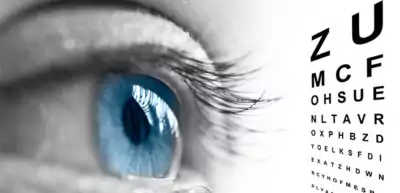PCOS test is based on the Rotterdam criteria for diagnosing PCOS.

Eyesight
If you are suffering from nearsightedness, don’t worry, you aren’t alone. Myopia, or nearsightedness, is the most common eye disorder in the world. Nearly 30% of US population is affected by the condition. It is estimated that nearly 9.6 million adults in the United States are severely nearsighted. Do genetics play a role in this disorder? Let’s find out.
Studies across families have indicated that there is a positive correlation between myopia in parents and in children. For instance, a 1993 study published in the Journal of British College of Ophthalmic Opticians concluded that children whose parents are affected by this condition have a much higher probability of being myopic. The study was conducted in China on children between the age range of 7 to 17 years.
Studies also concluded that myopia affects children whose either parents or siblings have it. However, there was no direct correlation obtained between the occurrence of the condition between grandparents and grandchildren.
The opinion on the number of genetic risk factors varies. While one study identified a single gene whose mutation caused myopia, another study indicated there are more than nine genetic risk factors involved in causing the condition.
Apart from genetics, there are several environmental factors, which play a role in myopia. The prevalence of this disorder in some populations increased dramatically from one generation to another, with an increase in education. Studies conducted on school children over the past century have concluded that there is a direct correlation between the condition and education, with increasing education levels leading to an increased occurrence of it.
Another environmental risk factor is diet. The occurrence of myopia is higher in countries, which have adopted western dietary patterns that are high in glycemic load (an estimate of increase in blood glucose level after eating a certain food.) A study conducted in Denmark suggested that the prevalence of this condition is much higher in diabetic patients due to a complication caused by high blood sugar. Higher levels of sugar in the blood can damage fine blood vessels and nerves.
Another study looked at the effect of physical activity on the progression of myopia. The study indicated that time spent on being physically active was inversely associated with a refractive change towards the condition. This indicated that children involved in any kind of physical activity were associated with less myopia.
Some other factors affecting myopia include the social income and education levels. People with higher social incomes and education are more likely to be affected by it. This could be due to increased exposure to books and electronic screens in the more educated and affluent populations. Finally, prevalence of myopia is also higher among people whose work requires a lot of focusing such as working on computers or working on detailed drawings.
To conclude, myopia can be caused by both genetic and non-genetic factors. The good news is there are several ways to improve eyesight naturally. So even if you’re at the risk of developing myopia, you can always prevent it through a combination of diet and lifestyle changes.